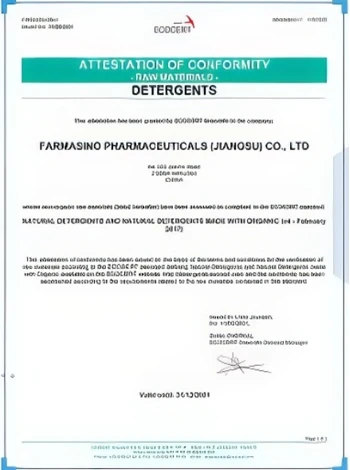



pam water treatment
Pam Water Treatment An Overview of Polyacrylamide Applications in Water Purification
Water treatment is an essential process that ensures the availability of clean and safe water for various uses, including drinking, irrigation, and industrial applications. One of the emerging substances that have gained prominence in this field is Polyacrylamide (PAM). This synthetic polymer has been utilized in several water treatment processes due to its effectiveness in coagulation and flocculation. In this article, we will explore the applications of PAM in water treatment and its benefits, limitations, and environmental considerations.
Understanding Polyacrylamide
Polyacrylamide is a polymer made from acrylamide subunits, which are formed through polymerization. It exists in several forms, including anionic, cationic, and nonionic variants, each with its unique properties that determine its application in water treatment. The anionic form is commonly used in municipal wastewater treatment, while cationic PAM is effective in industrial effluent treatment and solid-liquid separation processes.
Applications in Water Treatment
One of the primary applications of PAM in water treatment is flocculation. Flocculation is the process where fine particulates clump together to form larger aggregates called flocs, which can then be easily removed from water. PAM acts as a flocculant by neutralizing the charges on suspended particles, allowing them to adhere to one another. This process is particularly beneficial in treating wastewater from industries and municipal sources, where a significant amount of suspended solids and colloidal materials are present.
In addition to flocculation, PAM is also used in sludge dewatering operations. In this process, PAM aids in the consolidation of sludge, improving its mechanical properties and enabling efficient removal during treatment. This can significantly reduce the volume of sludge produced, which is essential for effective waste management and cost reduction in wastewater treatment facilities.
Moreover, PAM has found applications in the treatment of drinking water. It assists in the removal of turbidity and other contaminants, ensuring that the water quality meets regulatory standards. The use of PAM in drinking water treatment systems can lead to clearer, safer water while minimizing the use of traditional chemical coagulants, such as aluminum sulfate.
Benefits of Using PAM in Water Treatment
pam water treatment

The use of PAM in water treatment processes provides several advantages. Firstly, its ability to flocculate effectively means that it can significantly improve the efficiency of sedimentation and filtration processes. This results in higher quality effluents and lower overall treatment costs.
Secondly, PAM is versatile and can be tailored for specific applications by adjusting the molecular weight and charge density. This adaptability allows for optimized performance in various water treatment scenarios, making it a valuable tool for water treatment facilities.
Additionally, PAM's ability to work effectively in a wide range of pH levels and temperatures further enhances its utility in different environmental conditions.
Limitations and Environmental Considerations
While PAM offers numerous benefits, there are also limitations and environmental concerns associated with its use. One major concern is the potential toxicity of acrylamide, which can be harmful in certain concentrations. Therefore, careful monitoring and regulation are essential in its application, particularly in drinking water treatment scenarios.
Furthermore, the degradation products of PAM in the environment can lead to the formation of microplastics, raising concerns about long-term ecological impacts. This necessitates ongoing research into more sustainable alternatives and the development of PAM formulations that minimize these risks.
Conclusion
Polyacrylamide has emerged as a crucial component in the field of water treatment, contributing to more efficient processes and improved water quality. Its applications in flocculation, sludge dewatering, and drinking water treatment exemplify its versatility and effectiveness. However, it is vital for professionals in the field to remain acutely aware of its limitations and potential environmental impacts. Continued innovation and research will be necessary to ensure that the use of PAM in water treatment remains both effective and sustainable, ultimately contributing to the goal of providing clean and safe water for all.
-
Why Sodium Persulfate Is Everywhere NowNewsJul.07,2025
-
Why Polyacrylamide Is in High DemandNewsJul.07,2025
-
Understanding Paint Chemicals and Their ApplicationsNewsJul.07,2025
-
Smart Use Of Mining ChemicalsNewsJul.07,2025
-
Practical Uses of Potassium MonopersulfateNewsJul.07,2025
-
Agrochemicals In Real FarmingNewsJul.07,2025
-
Sodium Chlorite Hot UsesNewsJul.01,2025










